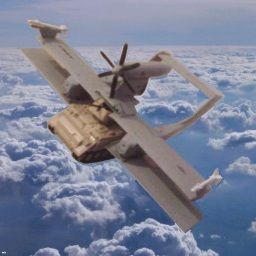On possibility of intercepting russian ballistic missiles in the ascent phase with ground launched interceptors.
Hear me out. Russians have missile silo fields in Povolzhya, ~~480 km from Ukraine, and near Murmansk, a couple hundred kilometers from Finland (at most; didn’t check precisely because irrelevant, less than 480 km). Of course, russians also have mobile launchers, submarines and other launch sites, but one problem at a time. I will prove the possibility of intercepting of Povolzhya missiles on ascent, and Murmansk ones will be obvious then.
Ascent phase of ICBM flight takes about 2-3 minutes, assume 200s, maybe more, and ends at height of approximately 150-200 km, worse case scenario 100. Let’s say we detect the missiles 20s after launch at the height of 15 km via a ground based radar installation in eastern Ukraine. At the height of 15 km, missile will be visible over the horizon at a distance of 437 km. It’s less than 480, but keep in mind that after launch missile travels some distance to the west, getting closer, and we have other means of detection, and surprisingly, we actually have some time to spare. If we assume an interceptor traveling at 3400 m/s (marginally slower than Sprint, actually), it will fly 430 km in 126s, add 3.4s for accelerating to speed at 100g (sprint numbers, through Sentinel LOADS reportedly managed 400 g). 126+3.4+20= 150s, from “200 and maybe more” the ascent phase of an ICBM typically takes. Now, of course, it is preferable to take the missile out earlier, before all the stages are separated, and to have some spare time, and interceptor launch won’t be instant, so likely our margins are lower, but it’s feasible, still. Now, is such a missile technically possible? I would argue yes, actually, it’s easier than one might think.
For one, the target is constantly getting closer. So, it doesn’t need to have a 480 km range, likely something like 300 km would do, didn’t yet calculate the precise numbers, need to find/model russian missile flight details. Sprint had like, 48 km range, so maybe just adding a new first stage (making it a three stage system) would do. Consider also that this is interception range, not ballistic range of the missile’s flight, restricted by other factors (aerodynamic control surface effectiveness, for once, radio command range). 3400 m/s speed should give a ballistic flight range of about 1000-1500 km (depends on the burnout altitude, and for sprint it’s like 0), and obviously apocenter of the trajectory wouldn’t be 50 km in.
Then, as the interception would need to happen at 100-200 km, not sub 60, majority of missile’s flight would be in upper atmosphere, where air resistance and heating are far less severe. Perhaps the missile could accelerate faster in upper atmosphere, to mach 12-15 (US HGV-2 glider demonstrated controlled high atmospheric flight at Mach 20), which would buy time for a slower ascent above 60 km, evening the thermal loads, so it wouldn’t need to glow.
Of course, I don’t propose using literally Sprint missiles or their copies. For once, radio command would probably be impractical beyond some range, and I’m not sure radar guidance is feasible, so perhaps just launching it at a predicted point in target’s ballistic path could work, or it could not, this aspect requires some consideration. I propose keeping the neutron warhead; it would lack precision for anything else. And, of course, if interception is possible from Ukraine - it is possible from Finland, maybe even with something closer to original Sprint, considering the low distance.
In conclusion, I think this is a feasible concept worth exploring. Such interception would cripple russian nuclear attack, through not completely negate it.
Pictured: me when when nukes


I’m having absolutely no calculation, data or knowledge about missiles, but I can assume that fail rate of such ICBM would be greater than the hit rate of the proposed interceptor, therefore we can eliminate that stage completely and wait for the ICBMs to destroy themselves. Highly cost effective, nod nod the world is saved!